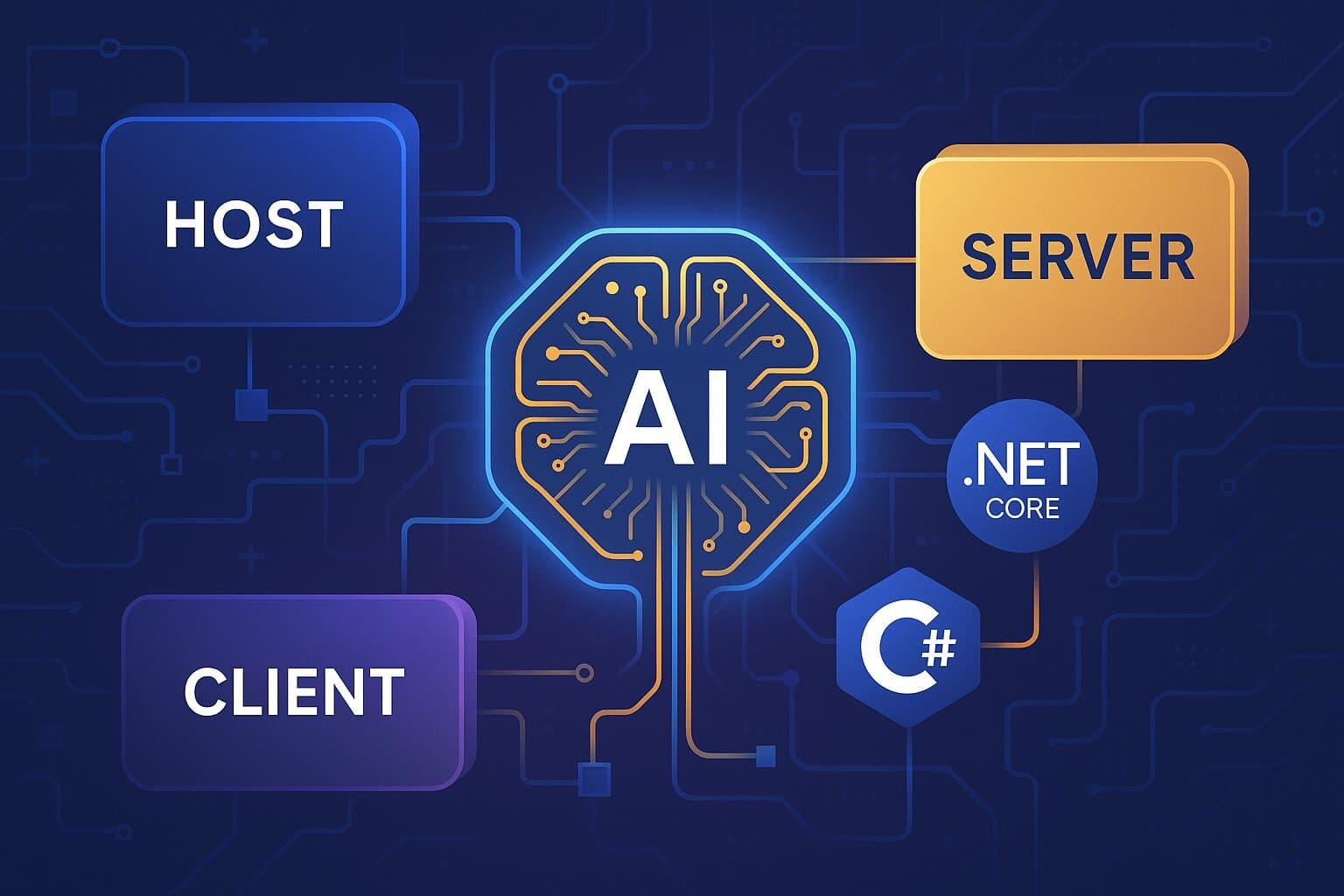AI Development & Tooling
By: Bryan Reynolds | 03 December, 2025

The article explores how artificial intelligence is transforming the real estate industry across all stages of the sales funnel, from predictive prospecting to closing deals, while also optimizing brokerage operations. It offers strategic insights into adopting AI, whether through off-the-shelf solutions or custom development, to gain competitive advantages.
Read MoreBy: Bryan Reynolds | 19 November, 2025

This article explores Google's fictional AI tool, CodeMender, and its strategic implications for businesses, emphasizing risk management, cost savings, security, competitive advantage, and the critical importance of AI governance and human oversight during AI-driven software development.
Read MoreBy: Bryan Reynolds | 11 November, 2025

This article explores the transformative impact of AI-powered Conversation Intelligence (CI) on enterprise operations, highlighting its applications in sales, customer service, marketing, and product development. It discusses the underlying technology, market growth, integration strategies, and decisions between buying or building custom solutions to leverage customer conversations for strategic advantage.
Read MoreBy: Bryan Reynolds | 04 November, 2025

This article provides an in-depth executive guide to Microsoft AutoGen, exploring its architecture, benefits, comparisons with other frameworks, real-world use cases, and future developments in multi-agent AI systems.
Read MoreBy: Bryan Reynolds | 31 October, 2025

This article provides a comprehensive guide to the Model Context Protocol (MCP) for.NET Core developers, outlining its architecture, roles, and implementation strategies, along with best practices for security, tool design, and deployment.
Read MoreBy: Bryan Reynolds | 20 October, 2025

This in-depth guide explores how B2B executives can strategically integrate artificial intelligence into every phase of the software development lifecycle to gain a sustainable competitive advantage. The article maps out the transformation from traditional, linear SDLC models to dynamic, AI-powered workflows, highlighting practical tools, real-world ROI data, and a disciplined framework for success. It dives into AI’s role as a co-creator, not a replacement for human talent, discusses the ROI paradox, outlines key risks and governance strategies, and delivers an actionable four-pillar playbook for AI adoption at scale. With an emphasis on executive leadership, data-driven decision making, and talent transformation, this resource offers a blueprint for organizations leading the shift to AI-native software development.
Read MoreBy: Bryan Reynolds | 02 October, 2025

This article explores the transformative role of voice search and conversational AI in reshaping customer interaction, emphasizing how voice has become a primary human-computer interface across homes, cars, and mobile devices. It highlights the explosive growth of voice-enabled devices, the rapid rise of voice commerce, and the critical importance of Voice Search Optimization (VSO) for brands aiming to remain competitive. The guide outlines a strategic CMO playbook covering conversational content, featured snippets, local search dominance, and technical foundations, then delves into how conversational commerce collapses the sales funnel and boosts ROI. Ultimately, it offers actionable steps for executives to audit their 'voice readiness,' evaluate build-vs-partner decisions, and position their organizations as leaders in the voice-first era.
Read MoreBy: Bryan Reynolds | 27 September, 2025

The article explores how AI and automation are revolutionizing the finance function, transforming CFO roles from historical scorekeepers to strategic, predictive leaders. It highlights the need for reengineering finance processes, developing future-ready skills, and making strategic build versus buy decisions for AI solutions.
Read MoreBy: Bryan Reynolds | 23 September, 2025

This article explores how generative AI, particularly ChatGPT, has rapidly moved from experimental novelty to an essential business tool, with over 65% of organizations now using generative AI solutions. It presents data-backed insights, shows how major companies are driving ROI in marketing, sales, operations, and software development, and outlines the urgent need for moving beyond public, generic tools due to data security and accuracy risks. The article argues for building custom AI solutions leveraging secure APIs, aligning them with proprietary data and workflows to create lasting competitive advantage, and provides real-world examples and strategic guidance for business leaders looking to architect their own AI-driven future.
Read MoreBy: Bryan Reynolds | 21 September, 2025

This article investigates the significant business risks associated with algorithmic bias in healthcare artificial intelligence (AI) systems. It presents compelling evidence from leading institutions to reveal how AI bias can cause financial, operational, and reputational harm, disproportionately disadvantaging women and minority patients. The article unpacks the root causes of bias—including flawed data, human and institutional blind spots, and opaque algorithms—then outlines a strategic framework, based on University of Chicago research, for robust AI governance and bias mitigation. Ultimately, it argues that customized AI solutions, rather than off-the-shelf products, offer healthcare organizations the control necessary to address these risks, safeguard patients, and protect long-term value.
Read MoreBy: Bryan Reynolds | 09 September, 2025

This executive briefing from Baytech Consulting offers a practical, business-focused guide to adopting AI agents in software development, cutting through industry hype to focus on strategic impact, costs, ROI calculation, leading tool comparison, and critical risk mitigation. The article clarifies the distinction between AI assistants (like GitHub Copilot) and autonomous agents (like Devin), outlines their capabilities throughout the software development lifecycle, and provides actionable steps for C-suite leaders to lead a successful, ROI-driven AI transformation within their engineering organizations.
Read MoreBy: Bryan Reynolds | 02 September, 2025

This article provides a comprehensive analysis of Anthropic’s new web-based Claude Code AI assistant, discussing its features, benefits, and strategic importance for enterprise software development. It highlights how Claude Code democratizes advanced, agentic AI-driven development for a wider audience, contrasts it with other leading tools like GitHub Copilot, Amazon Q Developer, and Tabnine, and offers actionable insights for IT leaders evaluating AI coding assistants. The piece covers practical adoption strategies, integration considerations (especially with Azure DevOps), and outlines best practices for successful enterprise rollout while also summarizing key market trends in AI-driven coding.
Read MoreBy: Bryan Reynolds | 01 September, 2025

This comprehensive guide explores Devin.ai, the world's first autonomous AI software engineer developed by Cognition Labs. The article cuts through the hype to provide an in-depth look at what Devin is, its architecture and workflow, pricing structure, costs (both direct and hidden), and its real-world effectiveness based on case studies and independent tests. It compares Devin to other AI coding agents and assistants, analyzes its practical ROI, and offers strategic advice for business and technology leaders considering AI integration into their software development pipelines. The piece ultimately concludes that Devin excels in highly structured, large-scale, repetitive development tasks, but requires significant oversight and is not yet a complete replacement for skilled engineering teams.
Read MoreBy: Bryan Reynolds | 28 August, 2025

The article examines the launch of xAI's Grok Code Fast 1, a disruptive new AI-powered coding assistant designed to accelerate software development with unmatched speed, scale, and cost-efficiency. It outlines the model's technical advantages—such as its Mixture-of-Experts architecture, vast context window, and transparent reasoning features—while providing a business-centric analysis of its competitive positioning against leading models from OpenAI, Anthropic, and Google. The piece offers actionable guidance for technology leaders on integrating Grok Code Fast 1 into development workflows, emphasizing intelligent, portfolio-based AI adoption strategies to maximize productivity, save costs, and foster innovation without replacing human talent.
Read MoreBy: Bryan Reynolds | 13 August, 2025

This in-depth article explores the Agentic SDLC, a transformative, AI-native approach to the Software Development Lifecycle that merges human expertise with intelligent agents and AI-powered tools for unparalleled speed, innovation, and productivity. It covers the strategic evolution from traditional and Agile methodologies to autonomous, AI-augmented workflows, detailing the shifting roles and toolsets for business analysts, designers, developers, and DevOps teams. The piece addresses the economic impact, operational blueprint, risk governance framework, and a phased roadmap for adoption, empowering organizations to achieve a competitive edge through holistic, responsible AI integration in software engineering.
Read MoreBy: Bryan Reynolds | 12 August, 2025

This article provides technology leaders with a comprehensive guide to evaluating and selecting AI-powered coding assistants, breaking down the strategic, financial, and operational implications of subscription vs. pay-as-you-go (BYOK) pricing models. It systematically analyzes top tools like Cursor, Windsurf, Cline, and leading VS Code extensions, mapping their strengths, weaknesses, and best-fit scenarios. Through detailed comparisons and best-practice cost management strategies, the article enables CTOs and CFOs to make informed choices that balance performance, security, and budget, while outlining how elite teams combine tools for maximum productivity and competitive advantage in the evolving AI development landscape.
Read MoreBy: Bryan Reynolds | 08 August, 2025

This article offers a strategic, in-depth guide for B2B executives on OpenAI's GPT-5, exploring its new unified architecture, advanced reasoning capabilities, and implications for enterprise adoption. It provides a clear comparison of GPT-5 against previous OpenAI models and leading competitors like Google Gemini and Anthropic Claude, with benchmarks, pricing, and use case analysis across industries such as finance and healthcare. The piece also addresses implementation best practices for CTOs, CMOs, and CFOs, covers potential risks and security considerations, and presents an actionable 90-day integration plan to help organizations maximize GPT-5's value and avoid disruption by competitors.
Read MoreBy: Bryan Reynolds | 31 July, 2025

Discover how the next era of AI is reshaping business strategy beyond chatbots—explore the latest architectures, the rise of autonomous agents, and how custom AI solutions can create a durable competitive edge. Learn why leading businesses are moving from generic AI tools to specialized models, and get a practical playbook for building a lasting AI advantage.
Read MoreBy: Bryan Reynolds | 28 July, 2025

This in-depth executive guide compares the two most advanced AI-native email clients—Shortwave and Superhuman—through the lens of business strategy, ROI, and technology alignment. The article explores their core philosophies, time-saving capabilities, feature sets, pricing models, and future outlook, especially in the wake of Superhuman’s acquisition by Grammarly. With actionable analysis for CTOs, CFOs, and business leaders, it offers a decision framework to choose the right tool for maximizing team productivity, collaboration, and long-term value in 2025 and beyond.
Read MoreBy: Bryan Reynolds | 25 July, 2025

This in-depth article explores how artificial intelligence, specifically technologies like Retrieval-Augmented Generation (RAG) and vector embeddings, can unlock decades of untapped institutional knowledge trapped within corporate documents and siloed systems. It details the hidden costs of "knowledge chaos" across departments, the tangible ROI of AI-powered knowledge management, and the technical principles that make it possible. The article also provides a strategic roadmap for executive leaders considering implementation, including the build vs. buy dilemma, practical first steps, and essential guidance on data security and governance. By leveraging AI, companies can transform their scattered, inaccessible information into a powerful, centralized asset that drives efficiency, innovation, and competitive advantage.
Read MoreBy: Bryan Reynolds | 24 July, 2025

GitHub Spark is an AI-native application platform that redefines software development by enabling rapid, natural language-driven creation and deployment of full-stack web applications. This strategic analysis explores how Spark transitions from AI-assisted to AI-native development, dramatically shortening idea-to-MVP timelines, supporting both technical and non-technical users, and integrating seamlessly with the GitHub ecosystem. The article compares Spark to competitors such as Loveable and Replit, evaluates its architecture, business value, risk profile, pricing, and offers recommendations for enterprises evaluating modern AI application platforms.
Read MoreBy: Bryan Reynolds | 16 July, 2025

This comprehensive article introduces Dify.ai as a powerful, open-source low-code platform for building AI applications, designed specifically with mid-market B2B firms in mind. It demystifies Dify’s capabilities in plain English, comparing it to competitors like LangChain, Flowise, OpenPipe, Azure ML, and AWS Bedrock. The article explores Dify’s visual workflow builder, multi-model support, agent framework, built-in DevOps, and enterprise scalability. It also provides a transparent breakdown of its pricing, discusses real-world integration with common tech stacks (including Docker, Kubernetes, and Azure DevOps), and outlines practical insights for CTOs, CFOs, and business leaders on how to responsibly adopt and scale AI solutions using Dify. This guide empowers mid-market executives to make informed decisions and unlock AI-driven productivity without the complexity or cost of custom AI development.
Read MoreBy: Bryan Reynolds | 15 July, 2025

This comprehensive guide explores Retrieval-Augmented Generation (RAG), a cutting-edge AI methodology that enhances generative models with real-time information retrieval from curated data sources. RAG bridges the gap between static language models and dynamic business needs by enabling AI systems to "look up" accurate, domain-specific information before generating responses. The article breaks down RAG's architecture, benefits, limitations, and implementation roadmap while comparing it to fine-tuning, traditional search engines, and other AI techniques. With use cases spanning industries like real estate, finance, healthcare, education, and telecom, RAG emerges as a transformative solution for organizations seeking trustworthy, up-to-date, and context-aware AI capabilities.
Read MoreBy: Bryan Reynolds | 12 June, 2025

This comprehensive guide provides actionable strategies to help users unlock the full potential of ChatGPT. It emphasizes foundational techniques like crafting clear prompts and providing context, progresses into iterative refinement through follow-up questions and conversational flow, and explores advanced methods such as using personas, examples, and task decomposition. The article also covers responsible use, including fact-checking and bias awareness, and encourages users to continually adapt by building prompt libraries and staying updated on new features. With this guide, users can transform ChatGPT into a collaborative, efficient, and powerful tool for diverse tasks across industries.
Read MoreBy: Bryan Reynolds | 06 June, 2025

Google NotebookLM is an AI-powered research and writing assistant designed to work strictly within the scope of user-provided documents, making it ideal for source-grounded analysis and knowledge synthesis. Unlike general-purpose AI like ChatGPT, NotebookLM emphasizes document fidelity, offering features like inline citations, summarization, structured content generation (FAQs, timelines, mind maps), and even Audio Overviews in multiple languages. With a tiered pricing model (Free, Plus, Enterprise), it serves individuals, teams, and large organizations aiming to unlock the value embedded in their internal documentation for tasks such as training, compliance, sales enablement, or strategic planning.
Read MoreBy: Bryan Reynolds | 05 June, 2025

Stable Diffusion is a cutting-edge generative AI model that allows businesses to create high-quality, customizable images from text prompts or existing visuals, offering significant cost savings, faster production timelines, and creative flexibility. Designed for accessibility, it runs efficiently on consumer-grade hardware and can be used through local installations, web platforms, cloud compute services, or APIs. Beyond image generation, it supports editing, animation, and fine-tuning for brand alignment. While the technology provides powerful advantages across marketing, design, e-commerce, and content creation, it also requires careful attention to licensing, ethical concerns, and copyright risks. This guide empowers business owners with the insights needed for strategic adoption and responsible use.
Read MoreBy: Bryan Reynolds | 03 June, 2025

This in-depth article explores the evolving intersection of Artificial Intelligence (AI) and software development, highlighting how AI technologies—especially Generative AI, Machine Learning, and Natural Language Processing—are transforming every stage of the Software Development Lifecycle (SDLC). While AI significantly accelerates development, automates tasks, and enhances productivity, it also introduces new challenges related to code quality, security, transparency, and technical debt. The report outlines how the developer role is shifting toward orchestration and oversight, emphasizes the need for strategic planning, governance, and cultural adaptation, and provides practical guidance on AI integration, tooling choices, and success metrics. Ultimately, it positions the future of software development as a symbiotic relationship between human expertise and intelligent machines.
Read MoreBy: Bryan Reynolds | 30 May, 2025

Surfer SEO is a cloud-based content optimization platform designed to improve search engine rankings by analyzing top-ranking competitor pages and providing data-driven recommendations. It offers tools like the Content Editor, SERP Analyzer, Content Audit, and Topical Map for planning and optimizing SEO content. With strong AI integration—including Surfer AI Writer, Auto-Optimize, and NLP analysis—Surfer streamlines content workflows while enabling collaboration across teams. Despite its strengths in usability, collaboration features, and real-time optimization, it faces criticism for promoting over-optimization, content unnaturalness, and reliance on correlation-based metrics. Ideal for experienced SEO professionals and agencies, Surfer SEO is most effective when used critically and strategically rather than blindly following its scoring system.
Read MoreBy: Bryan Reynolds | 29 May, 2025

In 2025, artificial intelligence (AI) has evolved into a transformative force driving innovation, efficiency, and personalization across industries. This comprehensive report maps the current AI landscape, exploring top tools by category—from text generation and visual creation to workflow automation and marketing enablement—highlighting their strengths, use cases, and limitations. It outlines the booming global AI market, powered by increased investment and widespread adoption, and provides a strategic framework for selecting AI tools based on business needs, scalability, integration, and ethics. As the AI frontier continues to expand, the article emphasizes that success lies not merely in adopting AI tools, but in integrating them intelligently into workflows to amplify human potential and achieve sustainable growth.
Read MoreBy: Bryan Reynolds | 26 May, 2025

Replit is an AI-powered, cloud-based development platform designed to democratize software creation by offering an accessible, all-in-one coding environment that supports over 50 programming languages, real-time collaboration, seamless deployment, and integrated AI assistance. With tools like the Replit Agent for app generation and the Replit Assistant for in-editor support, the platform enables rapid prototyping and empowers both technical and non-technical users to build and deploy applications directly from a browser. While ideal for learners, educators, SMBs, and internal tool developers, its performance and flexibility may fall short for enterprise-grade, mission-critical workloads. Its hybrid pricing model combines free access, subscriptions, and usage-based billing, and it emphasizes security through GCP infrastructure and SOC 2 compliance.
Read MoreBy: Bryan Reynolds | 23 May, 2025

Manus AI, developed by Monica.im, is a groundbreaking autonomous AI agent designed to bridge the gap between human intention and execution by autonomously completing complex, multi-step tasks across various domains. Unlike traditional conversational AIs, Manus AI functions as a “digital employee,” planning, executing, and delivering results independently. It supports a wide range of knowledge work—from research and data visualization to content creation and software development—while offering transparency through its “Manus’s Computer” interface. Currently in invite-only beta, it boasts high performance on benchmarks like GAIA but faces challenges in reliability, enterprise security, and scalability. Despite these hurdles, it holds disruptive potential in reshaping how professionals and businesses approach automation.
Read MoreBy: Bryan Reynolds | 22 May, 2025

Loveable AI is an AI-powered development platform that converts natural language prompts into full-stack web applications, enabling rapid prototyping, MVP creation, and frontend scaffolding. It combines accessibility for non-coders with developer-friendly features like GitHub integration and Supabase-backed backend generation. While its strengths lie in speed, usability, and end-to-end app generation, it faces limitations due to a credit-based pricing model and serious security vulnerabilities, particularly the 2025 "VibeScamming" exploit that exposed its potential misuse for phishing. Loveable AI is best suited for startups, solo developers, and early-stage projects that can tolerate usage-based pricing and have low security sensitivity.
Read MoreBy: Bryan Reynolds | 23 April, 2025

The blog explores v0.dev, Vercel's AI-powered UI generation tool, and how it transforms frontend development for businesses. It explains how v0.dev uses natural language prompts to produce production-ready React and Tailwind CSS code, helping teams rapidly prototype, streamline design-to-code workflows, and reduce engineering overhead. Key business benefits include faster MVP delivery, internal tool development without frontend expertise, UI consistency across products, and cost savings. The article also outlines pricing options and emphasizes v0.dev's potential as a strategic advantage in modern software development.
Read MoreBy: Bryan Reynolds | 09 October, 2024

Discover how low-code AI platforms are revolutionizing business efficiency by addressing key technical challenges. Learn about top platforms and how Baytech Consulting can tailor solutions to your needs.
Read More

